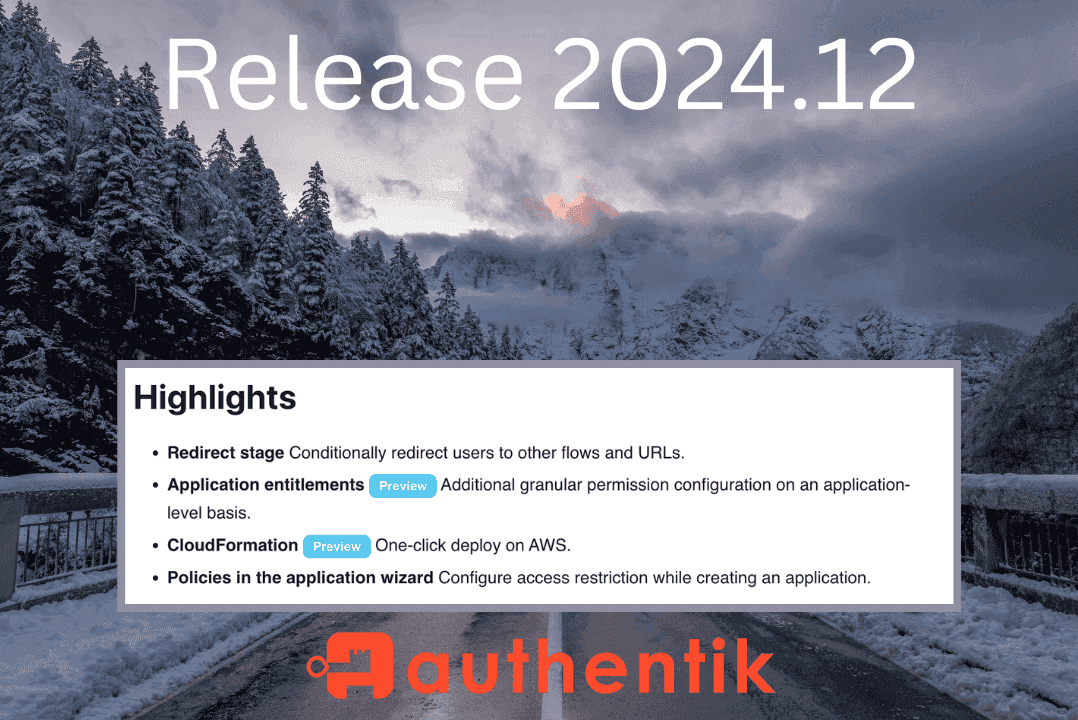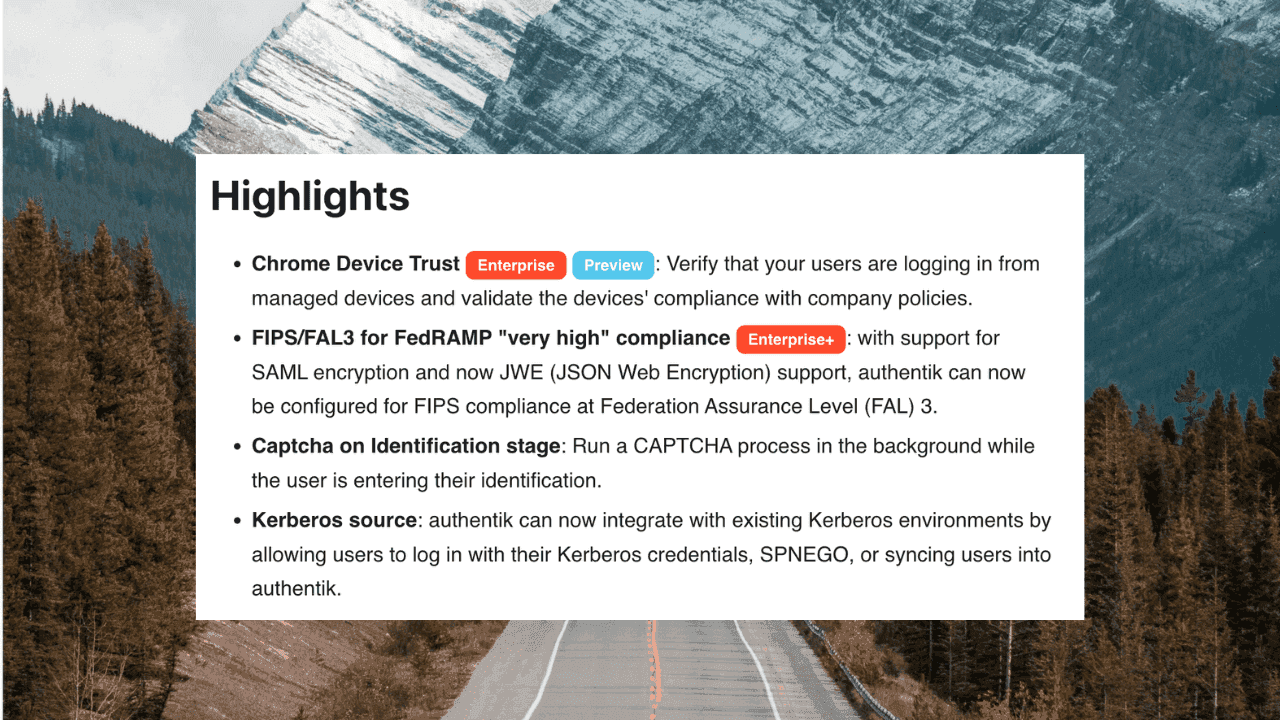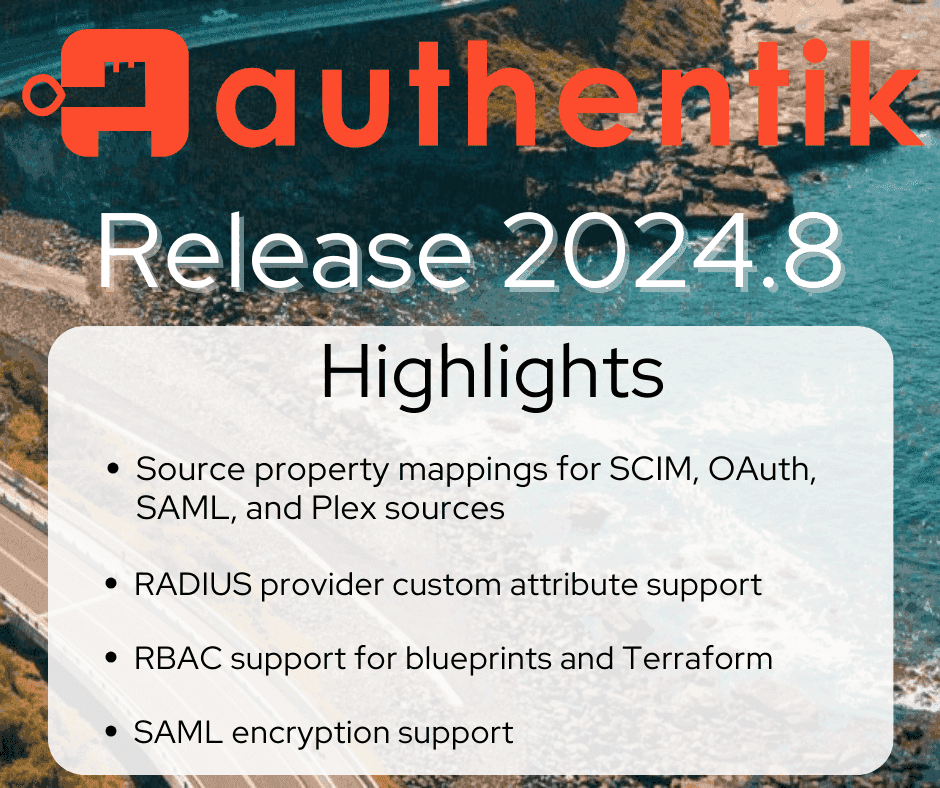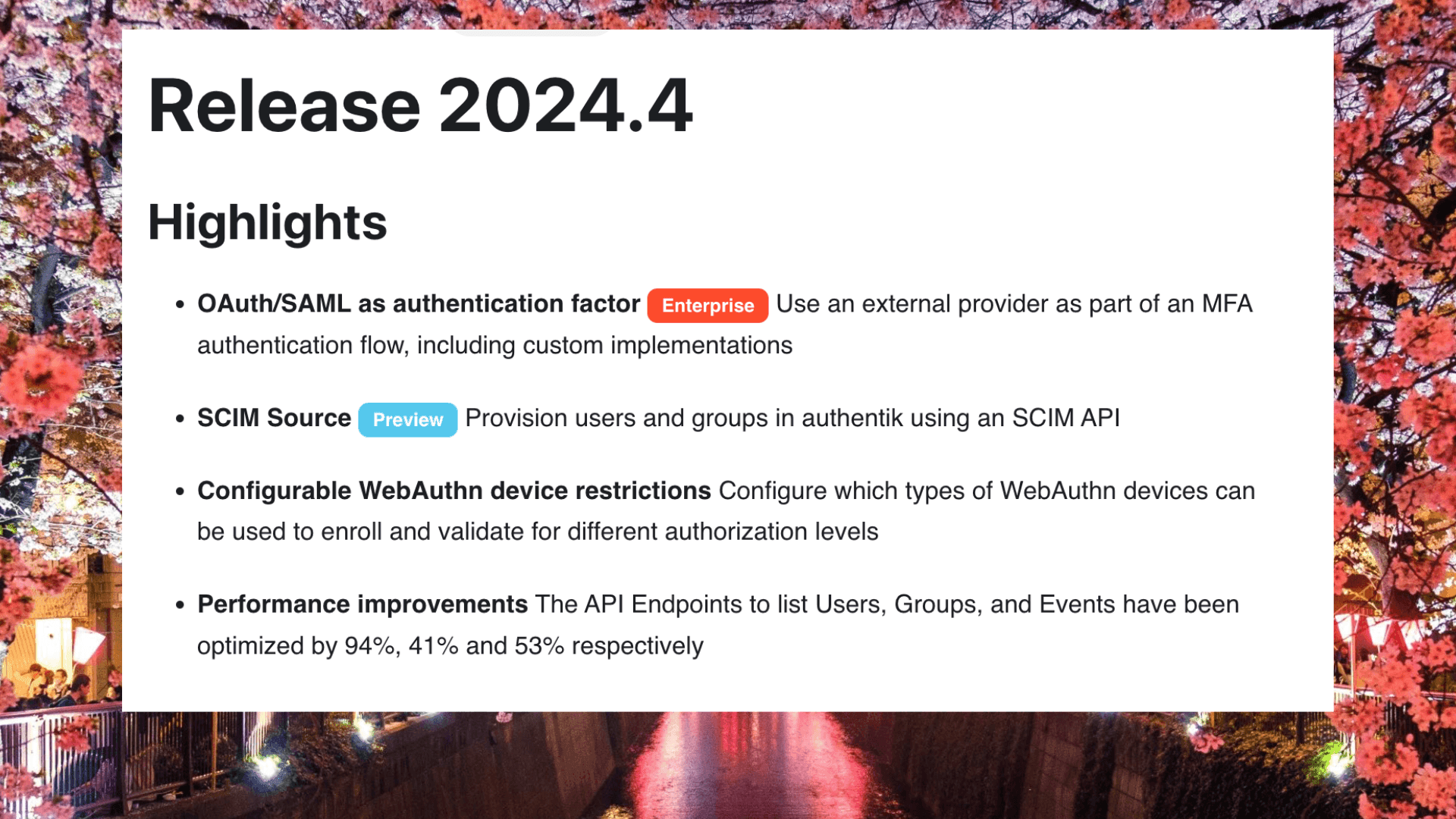authentik is an open source Identity Provider that unifies your identity needs into a single platform, replacing Okta, Active Directory, and Auth0. Authentik Security is a public benefit company building on top of the open source project.
Login boxes, MFA prompts, retyping blurry CAPTCHA characters… the routine is so familiar that we could say it’s really pure muscle memory that logs most users in to their target application. With most legacy identity providers, a one-size-fits-none experience can throw unnecessary hurdles in some users' way, while allowing other sensitive actions without sufficient security checks.
With authentik, using our flows to define and customize that mundane user experience, you can safeguard against the mistakes and security hiccups that muscle memory actions can produce, and create a flexible, customized workflow for authentication and access.
In this article, we take a closer look at these major components of authentik, and how they work together as fundamental building blocks to create a powerful yet flexible user authentication process.
Let’s dive in and take a closer look at how flows, stages, and their associated policies are used in authentik.
What are flows, stages, and policies?
They are the major building blocks in authentik, and are used to define the login and authentication steps taken by a user.
From the authentik documentation’s terminology page:
- Flows are an ordered sequence of stages. These flows can be used to define how a user authenticates, enrolls, logs out, recovers their account,etc. Flows are YAML files.
- A stage represents a single verification or logic step. They are used to authenticate users, enroll users, and more. These stages can optionally be applied to a flow via policies.
- Policies are, at a base level a policy, a yes/no gate. The criteria that are defined in a policy will evaluate to True or False depending on the type of policy and settings. This can be used to conditionally and dynamically apply specific stages to a flow, grant/deny access to various objects, and for other custom logic.
One of our users wrote about self-hosting authentik, and included a great description of authentik’s flows and stages:
“First, you define Stages that represent a single step of authentication — something like requiring a user to enter their username or a password. There's a whole lot to choose from. Once you've set up your Stages, you'll create a Flow, stringing those Stages together until you have a complete process to authenticate, register, or even delete a user.” Nick Telsan





